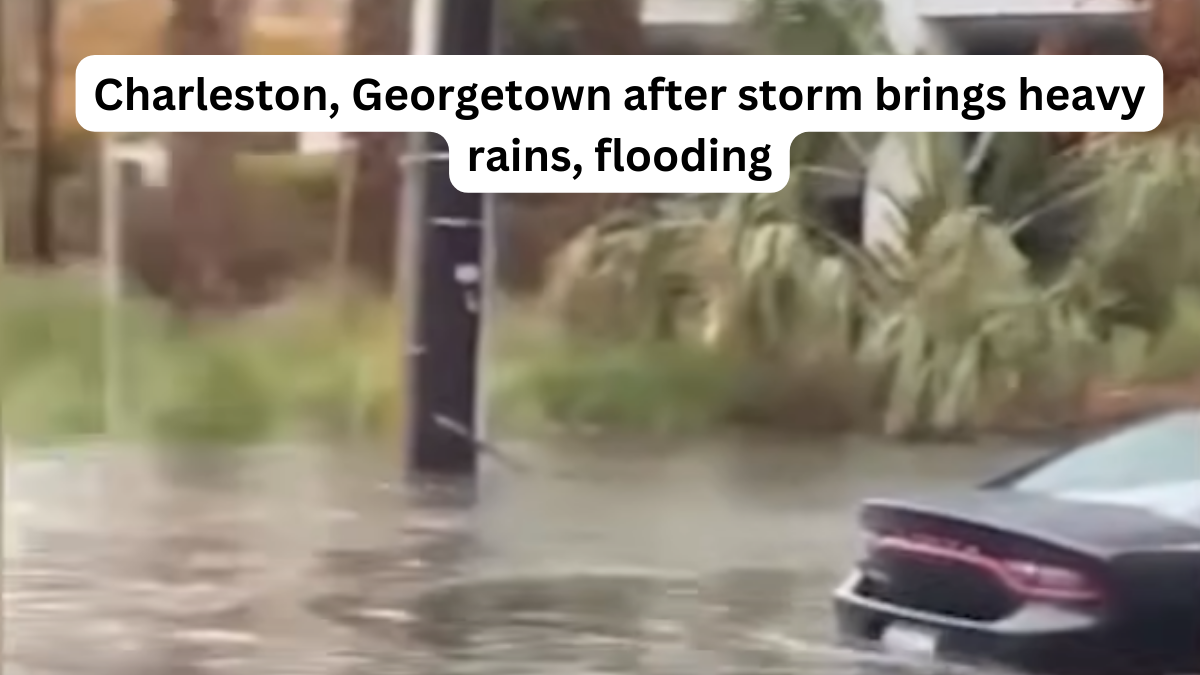Uncovering the Aftermath
The Charleston’s Rainfall aftermath of a recent storm system left the Lowcountry battling an onslaught of rain, leading residents and officials into an intense cleanup phase. This deluge, a staggering 16 inches in McClellanville and over 13 inches in Georgetown, submerged various areas under layers of water.
Table of Contents
A City Under Siege
Charleston County felt the brunt, with the Isle of Palms receiving 8.45 inches, Mount Pleasant 7.73 inches, and Sullivan’s Island and James Island each facing over 6 inches of rain. The city, besieged by historic high tides, witnessed inundated streets, homes, and businesses, presenting a day fraught with challenges.
The Path to Resilience
Despite the havoc wreaked, Charleston’s Rainfall remains resilient. While the city has thankfully seen no major injuries, the recovery machinery is in full swing. Mayor [Name] underscores the significance of adapting to the changing climate, emphasizing the necessity of preparedness against the projected rise in sea levels and increased tidal flooding.
Forward Momentum: City’s Preparedness
The city’s proactive stance involves collaboration with the Army Corps of Engineers to fortify its defenses against recurring tidal inundations. Recognizing the pressing need for robust infrastructure, Charleston is committed to evolving and securing its future against the impending challenges.
Call to Action
Residents are urged to report damages through the city’s dedicated damage reporting tool, ensuring a comprehensive assessment of the storm’s impact. Concurrently, the Charleston Water System alerts residents about potential sewer system vulnerabilities due to heavy rains and flooding.
Sewer System Vigilance
As the system warns of possible sanitary sewer overflows, the community is advised to steer clear of areas experiencing manhole overflows. Reporting such incidents promptly to the Charleston Water System at 843-727-6800 becomes crucial for effective management.
Snapshot of Chaos: Recounting the Aftermath
Visual evidence from submitted photos and videos depicts submerged roads and vehicles, capturing the scale of Sunday’s chaos. Charleston’s Rainfall bore witness to its fourth-highest tide, a record set by a non-tropical system, with Charleston Harbor hitting a peak tide of 9.86 feet according to preliminary reports from the National Weather Service.
| Aspect | Details |
|---|---|
| Rainfall in McClellanville | Exceeded 16 inches |
| Rainfall in Georgetown | More than 13 inches |
| Rainfall in Charleston County | Isle of Palms: 8.45 inches <br> Mount Pleasant: 7.73 inches <br> Sullivan’s Island & James Island: Over 6 inches |
| Charleston Harbor Tide Peak | 9.86 feet (fourth-highest tide on record, non-tropical system) |
| Impact in Georgetown County | No injuries or deaths reported <br> Motorists rescued from floodwaters |
| Damage in Horry County | Confirmed tornado <br> Damage in Forestbrook, River Oaks Drive, Burcale Road, and Ocean Boulevard in Myrtle Beach |
Charleston’s Rainfall Acts of Rescue and Resilience
In Georgetown, authorities responded swiftly, rescuing stranded motorists and preventing casualties. Despite gusty winds causing damage and upheaval in certain areas, the county reported no injuries or fatalities. Meanwhile, Horry County experienced a confirmed tornado, resulting in damages across Forestbrook, River Oaks Drive, Burcale Road, and Ocean Boulevard in Myrtle Beach.
Conclusion: A City United Against Nature’s Fury
The recent deluge and ensuing chaos have tested Charleston’s Rainfall mettle. However, in the face of adversity, the city stands united, rallying its resources and resilience to combat the challenges posed by nature’s unpredictable fury. As the cleanup continues and plans for fortification take shape, Charleston remains resolute, poised to navigate these turbulent times and emerge stronger than before.






















+ There are no comments
Add yours